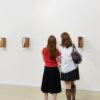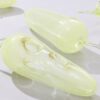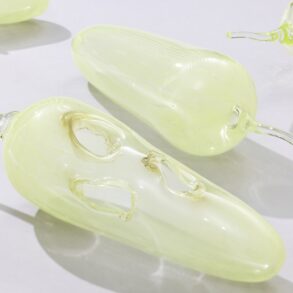
The 84-year-old American is perhaps best known for her groundbreaking feminist installation “The Dinner Party,” but she is an artist with a formidable range.
Like all women and all art, Judy Chicago contains multitudes. This summer, the 84-year old American artist’s lifelong interest in excavating and subverting female history through storytelling, activism and overtly feminine aesthetics and materials is on display in two bold and affecting European retrospectives.
Across venues in Britain and France, six decades of Chicago’s distinctly feminist oeuvre show a remarkable range. Minimalist sculptures; psychedelic spray-painted car hoods; landscapes billowing with bright plumes of smoke; and paintings of swirling, hallucinatory flowers fill the galleries with Chicago’s hallmark bright colors and undulating line.
Many works incorporate personal texts in tidy, looping cursive about gendered rejection, shame, longing and anger. And tapestries, wall hangings and monumental drawings on black paper present female bodies, including the body of the artist herself, in states of ecstasy, abandon, dissolution — being born, giving birth, dying and evanescing into the ether in rainbow sweeps and spirals. These works foreground the female nude, its life-giving properties and implicit connection to the natural world.
One of the shows, “Herstory” — which ran at the New Museum in New York this past fall and is now on show at the LUMA Foundation in Arles, France — is a classic chronological display of Chicago’s work from the early 1960s to the present; the other, “Revelations,” at the Serpentine Galleries in London, focuses on the artist’s drawings. The catalog for the London exhibition also includes an illuminated manuscript of the same name from the 1970s that Chicago produced while creating her best-known work, “The Dinner Party” (1974-1979), an installation that imagines a ceremonial banquet for 39 pre-eminent women.
Now a mainstay of art history studies, “The Dinner Party” has dominated understanding of Chicago’s career despite her prolific and wide-ranging output. The vast triangular table with elaborate ceramic and embroidered place settings was the product of years of collaborative work with female artisans, and it distilled a decade of research in archives and libraries, where Chicago unearthed figure after figure who had made groundbreaking discoveries across disciplines but whose contributions had been erased from history. Each place setting at the banquet is devoted to one of these women, each with her own special embroidered cloth and ceramic plate.
This post was originally published on this site be sure to check out more of their content







